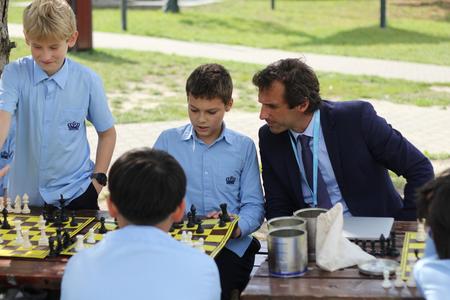Today’s students are the movers and shakers of tomorrow and the world will be in the hands of our children. That’s quite a daunting prospect, since we don’t know what the world in 2042 will look like. How greatly will technology advance in the next twenty years?
It’s clear we need to educate our children to become flexible, creative problem-solvers, resilient and resourceful, with the ability to apply their knowledge and skills in a variety of contexts. With forward-thinking education, they are much more ready to adapt to whatever life throws at them and able to embrace new initiatives with open minds.
The skills our children need
Educators already have some idea of what tomorrow holds: technology will be much more advanced and AI will be a big feature of our everyday lives. A balance between progressive business development and a sustainable environment will also need to be found.

So, to deal with these challenges, the students who leave education need to be ready to solve problems: it might be fixing the washing machine, juggling payments or changing an algorithm on a piece of agricultural software. They need to think flexibly and apply their knowledge from other fields of study to the problem in hand. As well as being creative thinkers, our future leaders need to be quick learners and resourceful enough to know how to find things out and learn skills quickly. They also need resilience and understanding that the solution to a problem might not be immediately found; in a world of high expectations and instant perfection (after all, we can download that movie immediately; get our food delivered to the door within the hour), we all benefit from exercising patience, dealing with failure, and learning from mistakes. Just as Edison and Einstein did. We are not brilliant all the time – nor should we be expected to be.
Recently, young people have spent more time on social media than ever before. With the Covid-19 pandemic, technology offered an escape and a way to connect with others. However, the reality is that being “online” resulted in children finding it harder to communicate and the negative impact of social media was felt. More than ever, we need a curriculum which values the power of communication: in order to succeed in the future, children need to be able to communicate positively with others.
How STEAM deals with these challenges
This is where STEAM comes in. STEAM (Science, Technology, Engineering, Art and Maths) is truly cross-curricular: blending scientific inquiry and understanding with technology and design skills; the inclusion of art ensures that whatever is created is aesthetically pleasing and, of course, mathematical skills are required in order to measure, compute and logically reason. The students work together on a project, improving and tweaking as they create it, communicating and using each other’s strengths to make it the best that it can be. They might fail, but giving up is never an option – the children need the resilience to carry on and fix the problem so that the outcome fulfils all the set criteria. The outcome? Not only a successful project but also the development of key skills necessary for the future.
What does STEAM look like in practice?
Groups of students at the British International School Bratislava were asked to design and create a prototype of something wearable, which would be inspired by an animal adaptation: a glow-in-the-dark suit, for example, inspired by bioluminescent fireflies, or a defensive jacket, inspired by puffer fish. This was one of many STEAM Challenges that are delivered to the students every year. When the students presented their final prototypes, they demonstrated they had researched thoroughly, developed practical skills and thought creatively, whilst learning the value of patience, compromise, resilience and communication. Most importantly, they developed an empathy for others so they could understand others strengths and weaknesses and work together as a team to succeed.
STEAM promotes imagination and curiosity, so our students not only become creative problem solvers, thinking “outside the box”, but also inquirers, working on ways to improve everything, challenge the norm and work together to make a better world, not only for themselves but their own children’s children.
Charlotte Nash Wanklin is STEAM Lead at The British International School Bratislava.
Author: Charlotte Nash Wanklin

 (source: Courtesy of BISB)
(source: Courtesy of BISB)